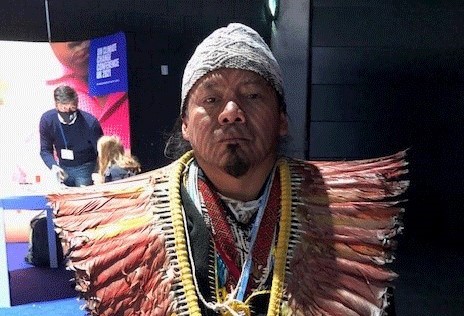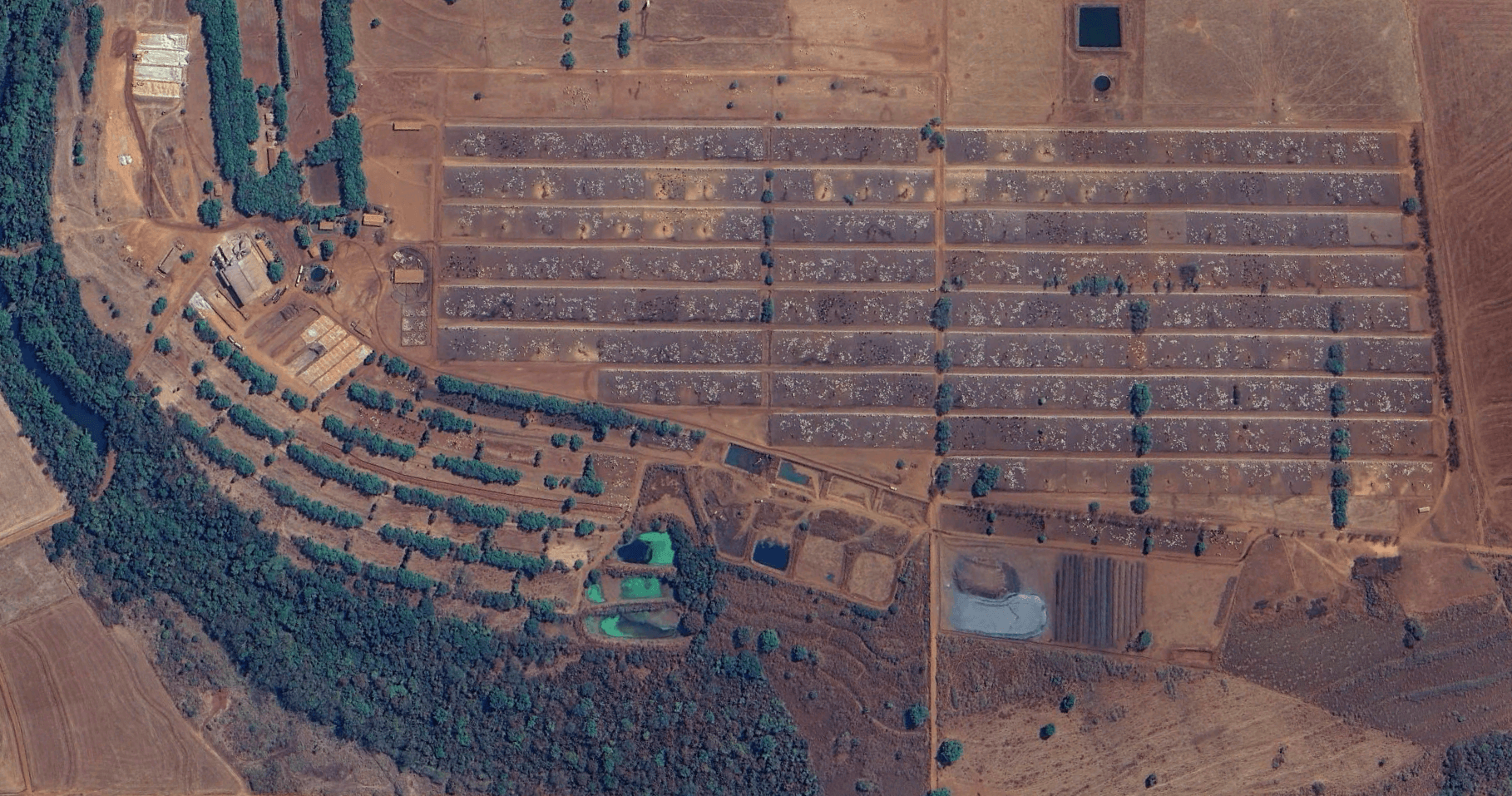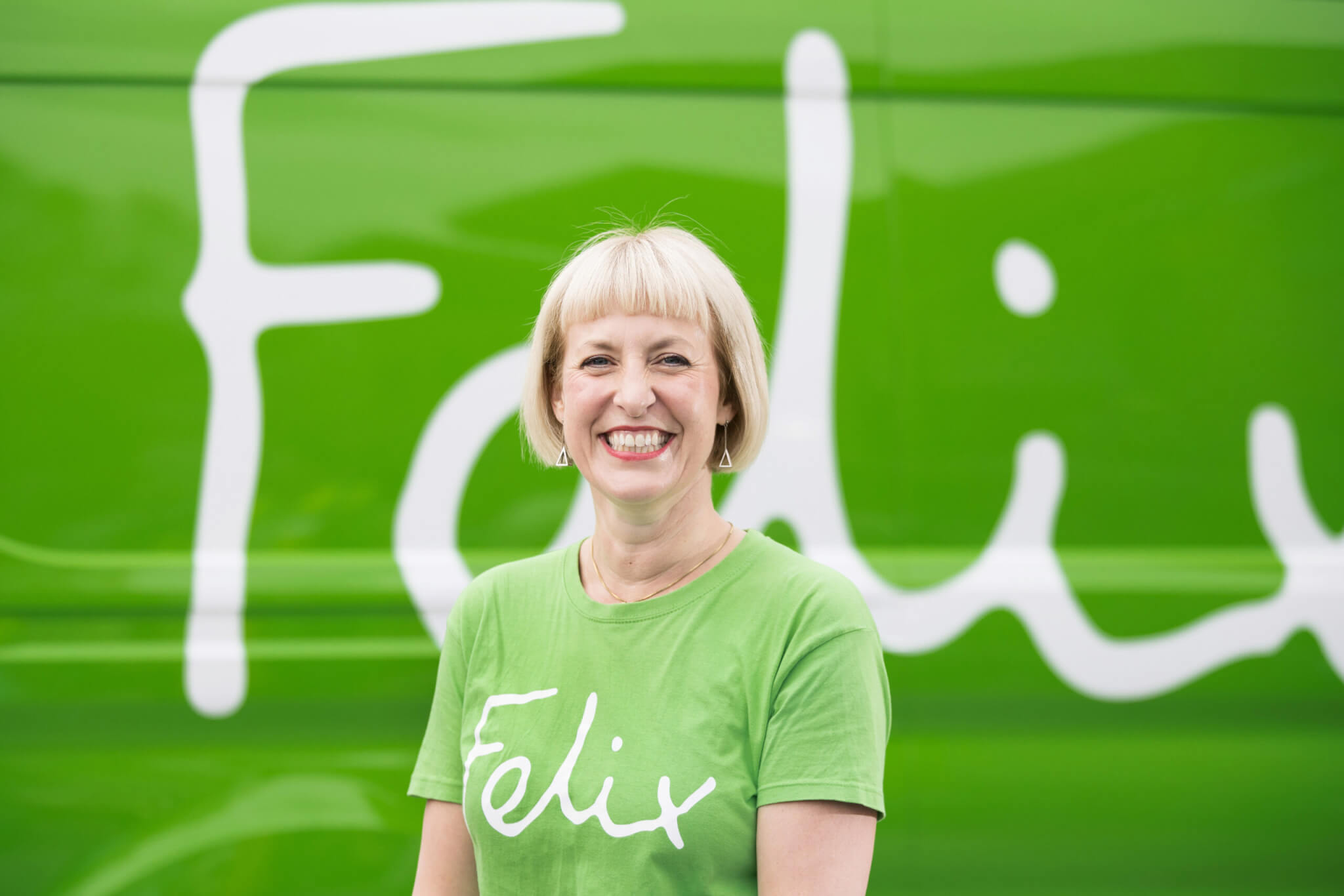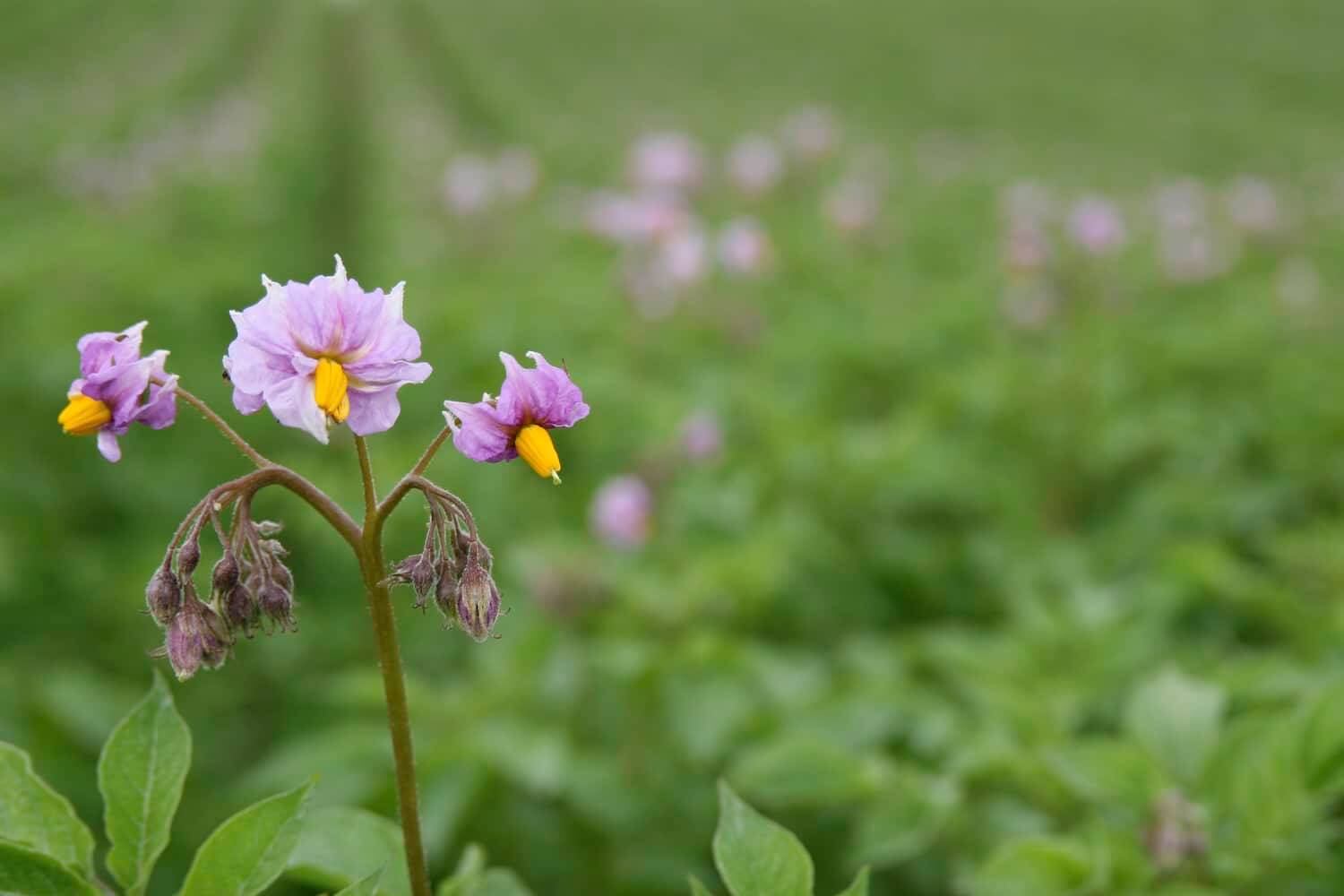As the last few days of COP26 comes to a head there is frustration that the climate talks have been more ‘blah, blah, blah’, as Greta Thunberg memorably put it.
The latest scientific assessment suggests that current commitments by countries to cut carbon fails to prevent dangerous global warming.
And new data from the UN found that emissions from our food, driven by deforestation for animal feed and nitrous oxide from fertiliser, has risen by 17 per cent.
At the ten-day COP26 conference in Glasgow there was unfortunately no single day dedicated to food, as there was for transport and energy. But just a glance at the agenda showed a number of events dedicated to issues around the food system, from the potential of storing carbon in grasslands, to the possibility of replacing animal protein with insects.
COP veterans agreed that food is going up the agenda. Patty Fong, programme director at the Global Alliance for the Future of Food, said she had never seen so many food events at a COP.
Just as the global community needs a just transition from fossil fuels to renewable energy, she said the world must work on an equitable transition to a food system that produces fewer greenhouse gases and provides healthy food for all.
“The climate community talk about a just transition. In food it is about food sovereignty,” she explained.
Brent Loken, global food lead scientist at WWF, said COP26 cannot possibly meet the goal of the Paris Agreement, which is to keep temperature rise below 1.5C, without looking at the food sector, which is now responsible for almost a third of emissions.
Those within the sector are already trying to cut their emissions and transform the food sector, and despite no dedicated day, they were visible across the conference.
Minette Batters, president of the National Farmers Union, attended the conference to call for financial support to help farmers produce food while producing net zero carbon, something she says they can do without reducing the numbers of livestock.
“If we took livestock out of the system – meat and dairy – then we would be totally reliant on chemical fertilisers. That would be disastrous for greenhouse gas emissions,” she said. “Livestock is a big part of the soil solution.”
And an early agreement saw the bosses of five of the UK’s biggest supermarkets promise to halve the environmental impact of a weekly food shop by the end of the decade. The initiative, in partnership with WWF, could see a switch to electric vehicles in the supply chain and promotion of more plant-based protein.
There were also agreements on cutting methane, which would include countries making an effort to reduce food waste to landfill, and halting deforestation that would both bring down the emissions of agriculture.
In the informal spaces outside the event there were also farmers and food producers. Nourish Scotland took over a nearby church and the People’s Summit gave space to indigenous voices and land workers. But the atmosphere was quite different. Here there was more anger and frustration than hope.

Ninawa, chief of the Huni Kui people in western Brazil, said indigenous people, who protect more than 80 per cent of the world’s biodiversity, do not have a voice at the conference.
“I am here to bring the voice of the peoples of the rainforest and tell the world what is happening with the soy plantations in the Amazon. Deforestation is destroying the Amazon fuelled by multi-national corporations,” he said.
“A driver of deforestation is the meat industry…If there was less of a demand for Brazilian beef there would be less deforestation.”
Others pointed out pledges to cut carbon at COP are primarily aimed at making business as usual (including industrial farming) more sustainable, rather than recognising it’s this system that has caused the crisis in the first place.
Holly Tomlinson, of The Landworkers’ Alliance, said food and farming has been more prominent at COP26. But she was disappointed that small farmers, who provide 70 to 80 per cent of the food you eat, have not been invited into the official discussions.
She said the small farmers need support to phase out fossil fuels and have a great deal of expertise to share on storing carbon in the soils.
Agroecology could include more trees on farms, local food supply chains and pastoralist livestock systems, and in doing so can help cool the Earth, the LWA said.
Loken, from the WWF, agreed that ideas for food system change needs to come “from the bottom up”.
“We need to start connecting the top and the bottom,” he said. “I love these ground-up movements that are happening all over the world, but if we don’t have an international multilateral process to support it, it’s not going to be enough. We cannot rely just on the individuals to do the work.”
Food has certainly gone up the agenda, but the focus now is on what kind of food, who benefits, who it’s produced by and for, and an emphasis on low-carbon agriculture. It remains to be seen how this is catered for at COP27, to be held in Sharm El Sheikh in Egypt next year.













How about a ‘pollution tax’ or at the very least a labelling system, on every single product to indicate its full impact from production, processing, transportation, storage, packaging, and waste disposal – cradle to grave. It is so hard for consumers to understand all the complexities, which are wider than just carbon. This, for example, would make sense of all the work Riverford did in deciding between growing veg in Europe or under glass here, and what I hope could make people realise how crazy it is to buy lamb from New Zealand!
The closest I have seen to this is Tim Lang’s suggestion of an ‘omni-label’ https://www.theguardian.com/environment/2008/sep/09/food.ethicalliving Personally, I think it is too complex to reflect everything in a label. Its like one of the other comments says, we all need to be educated.
I’m not advocating taking animals out of the farming system but it does show how out of touch Minette Batters is when she says without animals we would have to rely on chemical fertilizers. As far as I know Ian Tolshurst in Oxford grows plentiful crops using a completely Vegan growing system. I think he includes the use of good and varied rotations including green manures and the use of compost, soil fertility is good. I also agree that small farmers are important, should be subsidised and included. There are so many small units producing real food springing up.
Yes, I’m aware of a number of ‘veganic’ farmers. I believe it is possible. I have noticed there seems to be an argument from some people we ‘need’ livestock to grow veg. It can be useful. But both systems work. I guess the important thing is context!
I wasn’t really commenting on the issue of animal agriculture, as I have listened to the arguments around the use of animals within a rotation and realise it is complicated. What I was questioning was the assumption that without animals a grower would need chemical fertilizers, which just isn’t true. I read so many articles in which soil fertility is maintained and enhanced without resorting to chemicals.
Okay, yes, I agree that chemicals are not needed. I have been learning about biological methods of returning life to the soil by encouraging certain bacteria and fungi. Dr Elaine Ingham is very interesting on this. https://www.soilfoodweb.com
I agree, Batters seemed to be clutching at straws somewhat, as if the whole of UK animal agriculture is operating in this perfect mixed farming rotation. If we did implement this perfect balance of land to animals, I’m sure the quantity of animals would be vastly reduced.
I think Tolhurst is an inspiration, I did a feature on veganic farming. My takeaway however is that, while it’s possible, it’s very challenging and requires a lot of labour and ingenuity. It also relies on extremely short supply chains to remain economically viable and that the farm captures almost the whole value of the produce.
I’m not trying to poo poo the concept too much because it’s such a cleverly balanced system, but it would require a seismic shift in attitude to gain traction amongst farmers and supply chains. I would say it was a step too far for most farmers. But maybe that’s how the organic movement started?
https://wickedleeks.riverford.co.uk/features/farming-veganism/veganic-farming-solution-or-sideshow
That’s such an interesting article @Jack Perhaps the answer is a bit of both? If we have to cut down on livestock we can’t expect all farms to have access to manure. So if we want to have more veg and other foods produced without chemicals then veganic needs to be in the picture too? I think the highly complex biological approach could be an option. Yes it is complicated but so is chemicals if you think about it we just need the systems in place to help farmers. I did think it was odd that Batters was focusing on livestock to fertilise soils. Surely she is admitting then that we need to come off chemicals??
Hi Louise,
Definitely needs to be in the picture. It might be a similar transition to what’s happening now where the conventional sector is borrowing lots of knowledge and techniques from the organic sector in order to ease their reliance on pesticides and fertilisers (even though they haven’t gone ‘fully’ organic).
Hopefully we’ll see an increased influence of veganic farming on organic/conventional if we need to go a further step to reduce our reliance on animal agriculture in the light of methane agreements.
However, it would be interesting to know if more carbon is sequestered into the ground if livestock are grazing the ground, or if we reforested the land? Interesting trade-offs to think about.
If we started paying livestock farmers to be foresters, would there be a loss of culture and identity?
Let’s not forget that a lot of vegetarian and vegan options use soy products, and that items like jackfruit and banana flowers which come into this country as canned delicacies to be turned into pretend meat and fish., are not exactly ‘wholefoods’.
Anthony – I don’t think that most people will spend time reading labels apart from country of origin. If their geography knowledge is up to date, that is all that matters to most people. To b honest, that and artificial additives is all I look out for..
Local and wholefood is the way to go, and is a mantra to which most folk would be happy subscribe..
Just my opinion.
Yes, I think local and whole food is a good mantra. Soy products generally come from non-GM European farms, whereas soy for animal feed, which is a far larger amount comes from South America. Also animal products are usually higher carbon. So I don’t think we should worry too much about vegetarians eating soy. I agree food miles is a good thing to look out for though, and additives.
I think I’ve eaten jackfruit once, as for banana flowers, never heard of them. Soya, some I consume, grown in Europe, tempeh and tofu, not sure where it comes from. I humbly admit all our food choices have an impact on our world. I do love pineapple and papaya.anthony
I humbly admit that I the food I eat has an impact on the planet too! I like how you admit that and accept we can still have a debate and try our best. Jackfruit curry is delicious cooked by a good chef but when I have tried cooking with the tinned stuff it did not go well!
I have never understood the reasoning behind moving so much food around the planet. We send our locally grown food and meat mostly to Europe and then import same???? Yes, we know we will never be able to grow pineapples in the UK and some imports are needed as well as loved. I don’t understand the movement and exchange of the same product. I buy locally whenever possible and always try to support UK suppliers.
Generally, people want to do the right thing, it’s a case of Education, Education, Education. Starting with schools. Maybe if food production and biodiversity could be taught there, the children could come home and educate their parents.
Its capitalism I guess! And while there are advantages in trade there are products that do not need to have such a heavy carbon footprint or that we don’t need at all. I agree education is the key to getting the consumer to drive change. And I think children are already educating their parents!
In the 1950’s thereabouts, this country could have been to a large extent self reliant in staple foods; if the land had been used to its maximum potential; if people were to eat slightly less meat, and if we would be happy with bread made with British wheat instead of Canadian wheat. Low land for horticulture and dairy, higher land for dual purpose animals and higher still moorland for hardy beasts including sheep. Ecosystems would have been preserved and animals not exploited. Now there are just too many people in this country for this to happen, and some people seem to have lost the ability to empathise with the environment. Maybe the pandemic has made some folk aware of the beauty and diversity of nature – we can always hope. Time perhaps for ‘nature walks’ in schools as we had.
I think Nature Walks are an excellent idea for getting the next generation engaged. Children certainly love foraging.. A lot of what you suggest is put forward in Henry Dimbleby’s recent Food Strategy https://www.nationalfoodstrategy.org Certainly the idea of using different areas of land for different purposes – productive land for horticulture, highland for sheep/ carbon storage etc. So do not lose hope just yet….
Have you come across ‘Diet for a Small Island’ by Patrick and Shirley Rivers? It’s an older book (but not ancient). There is some good stuff in it if you can get a second hand copy of it.
I used to love nature walks, both with school and with parents – usually my dad whilst mum made Sunday dinner. I clearly remember a sloughed snake skin hanging on a tree and seeing a stoat in ermine one winter day. All this before I even started secondary school. We had wildflower displays in various laboratories in secondary school, and specimens were labelled so that we casually learned their names. Reminiscing the good times!! Do we have the teachers and parents with sufficient natural history knowledge to pass to youngsters? I can but hope …..
I have read Diet for a Small Planet and the more recent Diet for a Hot Planet but not Diet for a Small Island. I presume it is the same argument but for the British Isles? I’d be interested to see it but can’t find it online. I think parents today do have less Natural History knowledge but are trying to catch up so we can help our children. Patrick Barkham’s recent book Wild Child is a great help.